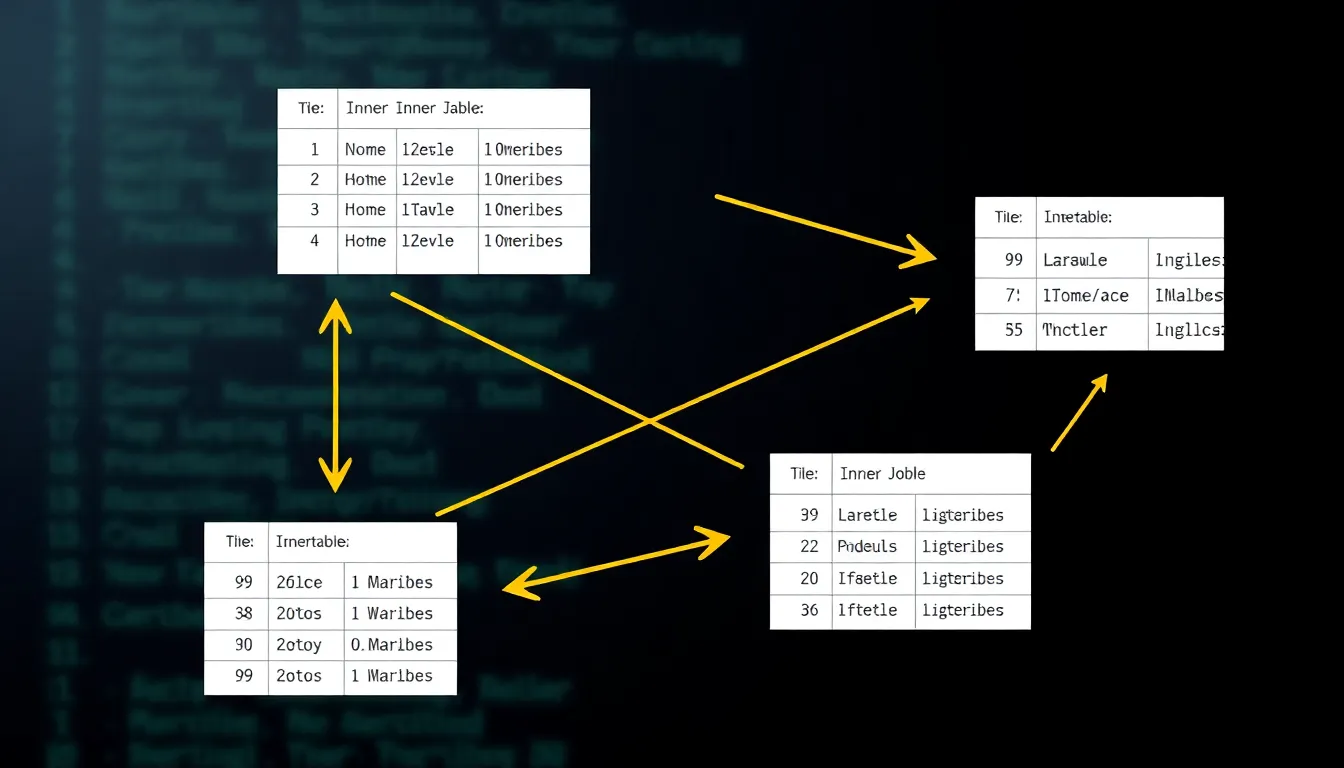In the world of databases, joins and relationships are the unsung heroes that keep everything connected. Imagine trying to throw a party without knowing who’s bringing the chips or who’s on the guest list. That’s what managing data without joins feels like—chaotic and confusing.
Table of Contents
ToggleUnderstanding Joins and Relationships
Joins and relationships serve as essential components in database management. They facilitate the connections that make data meaningful and accessible.
Types of Joins
Different types of joins exist, each serving specific functions. Inner joins return only the rows that match in both tables. Left joins, on the other hand, include all records from the left table and matched records from the right table. Right joins perform the opposite, selecting all records from the right table regardless of matches. Full outer joins combine features from both left and right joins, displaying all records from both tables. Cross joins produce a Cartesian product of the tables, allowing all possible combinations of rows. Each type supports various querying needs and offers flexibility in data retrieval.
Importance of Relationships
Relationships enhance database integrity by ensuring data is organized logically. They reduce redundancy and maintain consistency across tables. Establishing one-to-one, one-to-many, and many-to-many relationships clarifies how data interacts. In a one-to-one relationship, a unique record connects to another unique record. A one-to-many relationship connects a single record to multiple related records. Many-to-many relationships allow multiple records from one table to connect to multiple records in another table. Properly defined relationships promote effective data management, simplifying queries and improving performance.
Inner Join

Inner joins form a fundamental part of database management. They connect data from two or more tables by matching related columns, allowing for comprehensive data retrieval.
Definition and Usage
An inner join retrieves records with matching values in specified columns from both tables involved. This join type excludes rows that have no match in either table, ensuring only complete datasets appear in the output. For instance, when combining customer and order tables, an inner join displays only those customers who have placed orders. SQL syntax for an inner join typically includes the keywords INNER JOIN, followed by the tables and the conditions for matching records. Such functionality ensures efficient data queries and improves overall data accuracy.
Real-World Examples
Real-world applications of inner joins occur frequently in diverse business environments. Consider a university database where student information links to course enrollment data. An inner join can extract records of students enrolled in specific courses, thus displaying pertinent details about attendance and grades. In e-commerce, linking product and sales tables demonstrates how an inner join showcases products that have completed sales transactions. This approach not only enhances reporting but also offers valuable insights into customer behavior and inventory management.
Outer Joins
Outer joins are crucial for retrieving comprehensive datasets from multiple tables in a database. They allow users to access all records from one table and only matching records from another.
Left Outer Join
A left outer join includes all records from the left table and only the matched records from the right table. Unmatched records from the right table return NULL values. For instance, if a database has customer data in one table and order data in another, a left outer join shows all customers, even those without orders. This operation is vital for understanding customer relationships when not all customers make purchases.
Right Outer Join
A right outer join follows a similar principle, including all records from the right table and matching records from the left table. Unmatched records from the left table also return NULL. In a scenario where product data exists in one table and sales data in another, a right outer join shows all sales, including products that may not be linked to a sale. This visibility helps businesses identify unsold inventory.
Full Outer Join
A full outer join merges records from both tables, including all records regardless of matches. When a match occurs, it displays data from both tables; when no match exists, it fills with NULLs from the source table. For example, consider a full outer join between employee and project tables; it highlights all employees and projects, allowing a comprehensive view of assignments. This join type is instrumental for organizations needing to assess all available resources alongside ongoing projects.
Self Joins
Self joins establish a connection within the same table, allowing comparisons between rows. This process proves valuable when data relates back to itself, like organizing employees based on supervisors.
Concept and Applications
Self joins utilize two instances of a single table in a query. They often employ aliases to differentiate between those instances. For instance, an employee table might connect employees to their respective managers. When querying this, an SQL statement could join the table with itself, identifying relationships based on the manager’s ID. Businesses frequently use self joins in hierarchical data scenarios, such as organizational charts or product categories, facilitating insight into structures and relationships. The versatility of self joins contributes significantly to data analysis and reporting, offering a clearer perspective on relational dynamics.
Cross Joins
Cross joins produce a Cartesian product of two tables by combining every row from one table with every row from another table. This type of join forms a dataset that encompasses all possible combinations between the two tables.
Characteristics and Use Cases
Cross joins lack any joining condition, resulting in a potentially large output dataset. For example, if one table has 10 rows and the other has 5 rows, the result includes 50 rows. Efficiently leveraging cross joins proves useful in specific scenarios like generating combinations or statistical modeling. Businesses may utilize cross joins to create comprehensive lists of potential product variations or to perform data analysis across multiple dimensions. In reporting, they facilitate insights into scenarios where all pairings need exploration, such as marketing campaigns measuring every possible customer interaction with diverse product lines.
Understanding joins and relationships is vital for effective database management. They not only streamline data retrieval but also ensure data integrity and consistency. By leveraging different types of joins, like inner and outer joins, businesses can extract meaningful insights from their data. Relationships further enhance this process by organizing information logically, reducing redundancy, and simplifying complex queries.
As organizations continue to rely on data-driven decisions, mastering these concepts becomes increasingly important. The ability to connect and manage data effectively can lead to improved performance and better strategic outcomes. Embracing the intricacies of joins and relationships ultimately empowers businesses to harness the full potential of their data.






